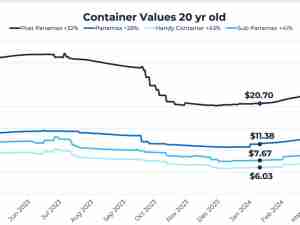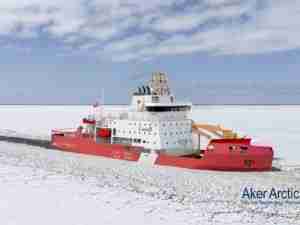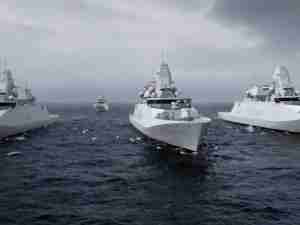At the May 3-5 spring meeting of the Gulf Ports Association of the Americas (GPAA), the Port of New Orleans showed off its readiness to host the annual convention of the American Association of Port Authorities (AAPA) in September, while GPAA delegates looked to efforts to further trade relationships with ports of Mexico and Cuba.
Those who may have questioned the ability of the Crescent City to host AAPA's 95th annual convention Sept. 10-14 found that New Orleans is well along in its recovery from the Aug. 29 strike of Hurricane Katrina. Unlike the GPAA event, which draws fewer than 100 participants from the Gulf region, the yearly AAPA gathering typically attracts 600 or more port leaders from throughout the Western Hemisphere.
The Port of New Orleans proved that it is bustling, with meeting-goers treated to 'lagniappe,' a Creole term for 'a little something extra,' on the final scheduled day of the gathering as Mediterranean Shipping Co.'s MSC Alessia arrived on its first Big Easy call in service between Europe and the United States and Mexico. The vessel, with a capacity of 6,732 twenty-foot-long-equivalent container units (teus), is the largest-capacity containership ever to call at New Orleans.
During the business meeting of the GPAA's US delegation, held May 4 at the New Orleans Marriott, port officials discussed numerous issues, including how to benefit from a US-Mexico trade flow study and the possibility of holding a special meeting in Cuba sometime next year.
Association officials declined to release the first-phase report of the proprietary trade flow study, which was commissioned last year for nearly $25,000, with $1,000 apiece coming from participating port authorities. However, GPAA leaders expressed optimism concerning expanded opportunities for US-Mexico maritime commerce.
'We think there's great potential there for greater trade,' said Phil Prejean, executive director of the Port of West St. Mary, on Louisiana's Central Gulf Coast. Prejean is in the first year of a two-year term as GPAA US delegation president.
Prejean said the North American Free-Trade Agreement (NAFTA) has spurred substantial additional trade by land between Mexico and the United States since its 1994 implementation, but he said he believes the maritime potential has yet to be realized.
'We would like to see some of that commerce move by ship,' Prejean said, 'and we think we can be competitive with that.'
Prejean also was among those expressing confidence in potential for increasing U.S-Cuba trade, which was halted by the 1962 US embargo and has only slowly, quietly re-emerged as certain agricultural products have joined medical aid items as accepted cargoes for US exportation to the island.
'Representatives of some individual ports have gone to Cuba,' Prejean said, 'but, if the Gulf ports visit collectively, it makes it a little easier on everybody, political considerations notwithstanding. Traveling as a group like that, I think we'd get a little more attention as far as the government is concerned. It's a matter of time before it opens.'
Pat Younger, executive director of the GPAA, said she will be attempting to get US Department of State approval for such a trip, hopefully to take place in 2007. She noted that GPAA received an invitation four years ago from Cuba's port association, ASPORT, to hold a meeting in Cuba.
'Because of the political situation the last few years, we didn't go,' Younger said, adding, 'We think the climate is changing enough to make it more palatable, more attractive to go.'
During the delegation meeting, Younger told port representatives that a two-day GPAA trip earlier this year to Washington was fruitful. Forty participants, representing more than two-dozen ports, took part Feb. 28 and March 1, with activities including filling six tables at a National Waterways Conference event honoring US Rep. David Hobson, R-Ohio, chairman of the House Energy and Water Development Appropriations Subcommittee. Participants also








